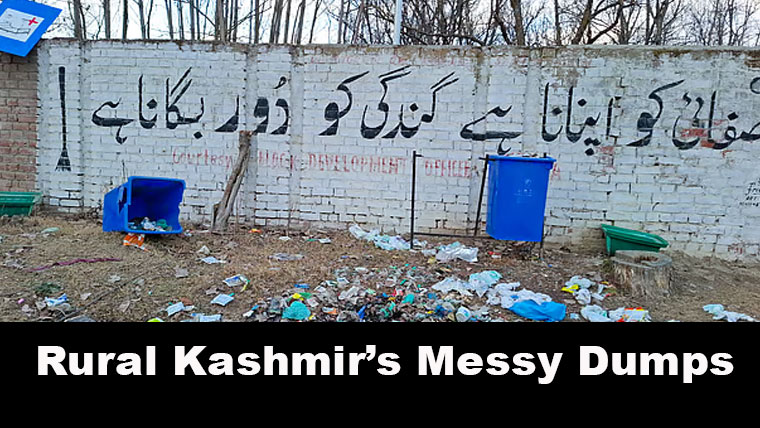RAFIABAD (TASSAWAR NEWS): When the Swachh Bharat Mission (Grameen) Phase-II was rolled out in 2020-21, it promised to transform rural sanitation and waste management across Jammu and Kashmir’s 6,650 villages. But four years later, the ambitious project is struggling under the weight of weak implementation, lack of awareness, and dwindling public trust.
The scheme envisioned safe and sustainable solid and liquid waste (SLW) management in every gram panchayat. Official figures show that 6,535 waste collection sheds, 50,000 dustbins, over 23,826 soak pits, 12,308 compost pits, and 5,527 sanitary complexes were built to support the initiative.
Segregation Sheds Turn Into Dumps
In reality, the majority of segregation sheds now serve as unregulated dumping sites. Without proper monitoring and with little public participation, heaps of polythene, plastic, diapers, and biomedical waste pile up, posing health and environmental risks.
Dr. Abdul Rasheed Ganie, Block Development Officer, explained that the sheds were designed for households to separate dry and wet waste before disposal. “The model was simple, but people continue to dump mixed waste, which has crippled the system’s purpose,” he said.
Although the government distributed compost kits and conducted awareness sessions through Gram Sabha meetings, these initiatives largely failed due to poor turnout and limited reach.
Sanitary Inspector Reyaz Ahmad Qadri admitted that while infrastructure exists, execution has faltered. “In Baramulla, dry waste is sent to a landfill, and wet waste is processed into fertilizer at Chadoora. Vermicompost pits were also introduced for cow dung, but villagers are misusing them for personal storage,” he noted.
He further added that Rafiabad, home to more than 100 villages, lacks even a single scientific segregation facility. “Without proper sites, these sheds are nothing more than garbage dumping yards,” Qadri stressed.
The vision of a cleaner, greener rural Kashmir remains far from reality, as poorly managed infrastructure risks undoing the very purpose it was built for.



